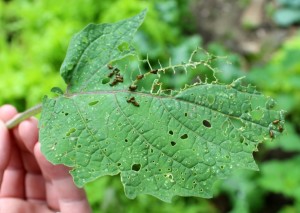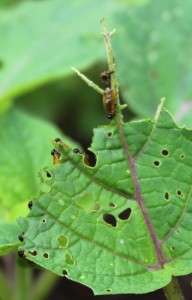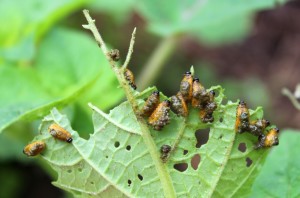What happened to the cabbage overnight? Who’s responsible for the holey and disappearing leaves?
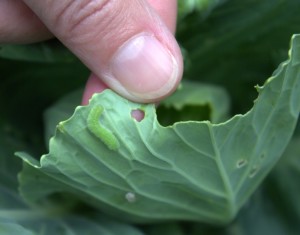
Most likely the larval stage of the White Cabbage Butterfly!
Haven’t you seen those white butterflies flitting about the place and landing on most every plant for a brief moment before they resume their flight of fancy? These insects seem really, really busy. And they are. They’re probably sipping nectar in between laying eggs on the plants they alight upon – most of them in the Mustard Family or Brassicaceae.
Their color is almost all white with a dark corner and a couple of dark spots on their fore wings. Maybe their color is more like a blend of yellow and off-white, but most people would describe them as a medium-sized, white butterfly.
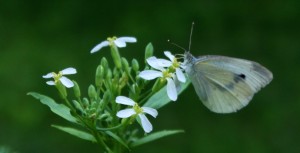
The cats really enjoy watching the butterflies go about their business. I seem to be a little irritated by them, but that’s only me thinking that they’re eating some of the food items we planted for ourselves. Oh well, I guess we can try to live in harmony, huh?
In case you can’t deal with cabbage butterfly caterpillars eating your cabbage, there are a couple of easy solutions to get rid of the so-called green cabbage worms:
- sprinkle with Diatomaceous Earth (DE)
to kill the larvae or other insects munching on your cabbage
- use a sheet or row cover to separate the adult white butterflies from the cabbage, broccoli and other Mustard Family members as this grub eats them all
Sprinkle or dust some DE on the cabbage leaves and sprinkle a ring around the base of other garden plants to keep pests at a minimum.
Diatomaceous earth kills garden insects. This free-flowing powder is an organic gardener’s solution to many pests, green cabbage worms included.
The alternative is to do nothing and sort of ignore the caterpillars. Holes in cabbage leaves only go so deep as the butterfly larvae are active during a short time span of the cabbage’s life. The cabbage plants being munched on now won’t be harvested for a couple of months.
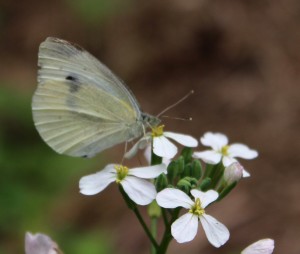
Leaves are pretty tightly packed together in the center of a head of cabbage and the leaves that the green grubs are eating will be the outer leaves that we take off of the cabbage head that we eat, so it’s all good.
